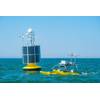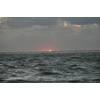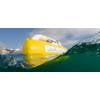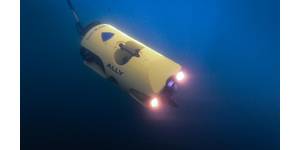A new wave energy testing facility will be built off the Oregon coast, aiming to support the development of innovations and technologies capable of harnessing the significant wave energy resources along U.S. coastlines.
Up to $40 million has been awarded by the U.S. Energy Department for the design, permit and construct of the open-water, grid-connected national wave energy test site in Newport, Oregon.
The new Pacific Marine Energy Center South Energy Test Site will be constructed by the Northwest National Marine Renewable Energy Center at Oregon State University with a combination of federal and non-federal funds, and is scheduled for completion by early 2020.
The pre-permitted site was designed to meet the Energy Department’s specifications as well as industry and community needs, letting researchers focus on the technological challenges inherent in testing—instead of permitting and regulatory matters. According to the Energy Department, the site is expected to be a flagship test facility for wave energy converters globally, playing a critical role in advancing wave energy technology into commercial viability.
The planned facility includes four grid-connected berths where researchers can test full-scale wave energy conversion device concepts and prototypes – essential to gathering critical performance data to address technical risks, lower costs and inform future designs to accelerate the commercialization and deployment of mass-produced wave energy technologies.
“Testing innovative wave energy devices at full scale in open water is an important step toward harnessing one day a reliable energy resource. Anyone who has swum or surfed in moderate ocean waves knows something of the power they represent,” said Franklin Orr, Under Secretary for Science and Energy at the Energy Department. “This new facility will help us to advance the science and technology of wave energy devices, and to identify the challenges we will ultimately need to overcome in order to achieve commercial deployment.”
More than 50 percent of the U.S. population lives within 50 miles of coastlines, offering America the potential to develop a domestic wave energy industry that could help provide reliable power to coastal regions. Recent studies estimate that America's technically recoverable wave energy resource ranges between approximately 900–1,230 terawatt hours (TWh) per year, distributed across the coast of Alaska, the West Coast, the East Coast, the Gulf of Mexico, Hawaii and Puerto Rico. For context, approximately 90,000 homes can be powered by 1 TWh per year. This means that even if only a few percent of the potential is recovered, millions of homes could be powered by wave energy as the technology progresses.













 February 2025
February 2025



